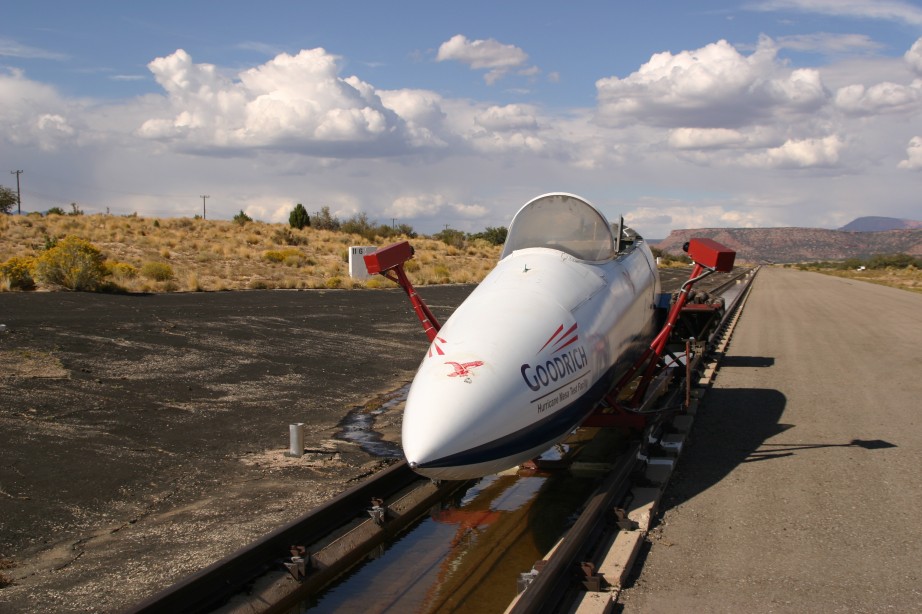
for the test. It is at rest in the water brake area at the end
of the track.
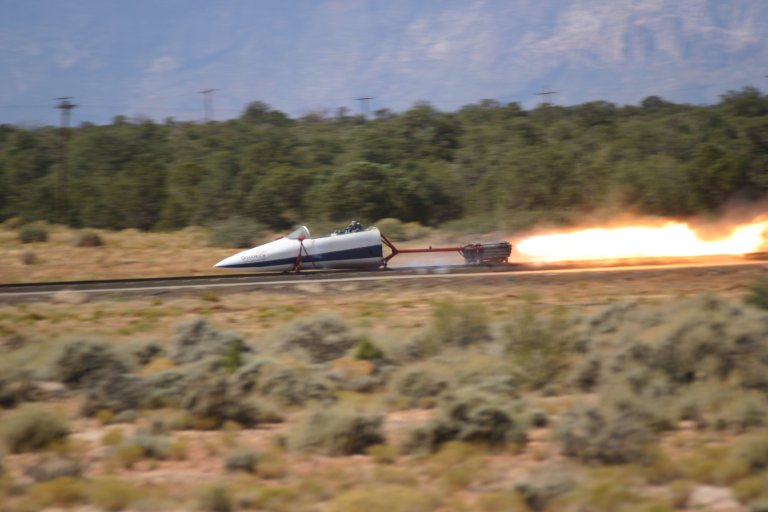
all that is left firing to maintain speed and prevent
deceleration loads on the seat/manikin.
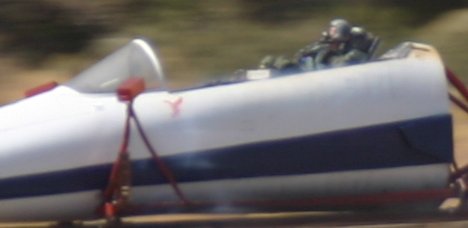
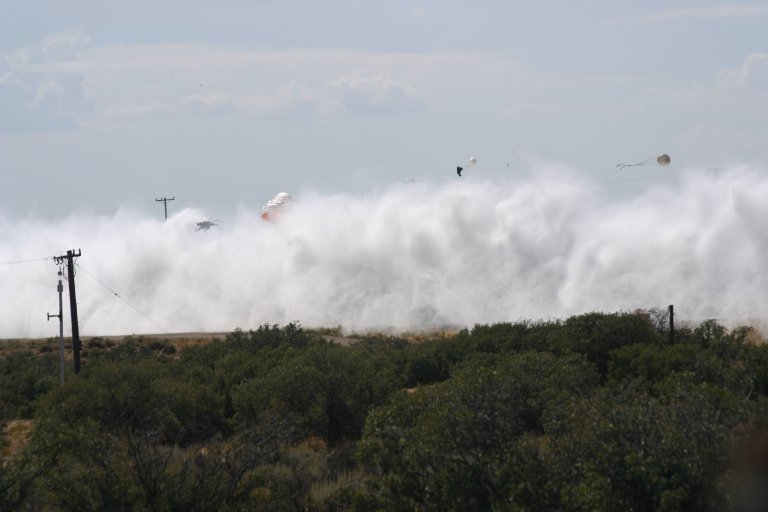
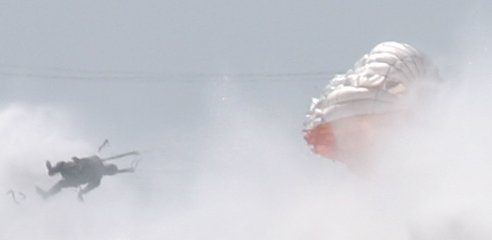
as seen in this detail of the above
|
"You see my wife has asked me to increase my life insurance prior to flying out to Utah on Vacation" I explained to the insurance agent. "How long will you be there?" he asked. "Thirty seconds or less." |
Thirty seconds was really about 17.5 seconds on Friday October 1st 2004 as I and about 50 members of the SAFE Association attended a USAF/Goodrich test of an F-16 ACES II seat. The seat had been modified with some upgrades being considered for integration into the fleet and was being tested in a full-up configuration with a 245lb LARD manikin. This manikin is a giant with a 40 inch seated height (measured from buttocks to top of head.) The goal was just over 600 Knots Equivelant Air Speed and I believe they made that.
The day began with a drive to the Studio in Hurricane, UT where we were given a briefing on the test plan for the day. We then were given a safety briefing which included no cell phones on the Mesa because of the electronic explosives, and my favorite- if you are walking in the brush and something is rattling, don't pick it up!
From there we were bused to the Mesa. Hurricane Mesa is a large outcropping rising thousands of feet off the valley floor. The elevation on the top is in the range of about 5000 feet above sea level. The facility was developed in the 1950s and has been in continuous use since then. The track is a standard guage railroad track, but that is the only similarity with most railroads. The track is set on a concrete form anchored to the bedrock. It is continuously welded and trued over the entire two mile length to a very tiny deviation, less than a tenth of an inch. The rail incorporates several areas in the trough where water brakes are installed, and the track ends at the muzzle end with a spectacular vista overlooking southern Utah. The track is designed in such a way as a sled can be allowed to travel over the edge to drop into the valley below. This is no longer done as often as it used to be, but the capability still exists.
For most tests the sled is stopped in the water brakes and the seat lands within the confines of the mesa top. In the 1950s the seats used back pack parachutes similar to those used by free fall parachutists of the time. Those packs were very slow to deploy compared with a modern, mortar-deployed ejection seat parachute. This meant that the horizontal throw distance the sled could provide would not be adequite for the parachute to deploy before the manikin and the mesa met. Hence the sled would be fired to the end of the track and the seat fired just before the water brake. The seat/man package would float by inertia past the end of the track and off the mesa falling towards the slopes and valley below. The parachute would deploy below the altitude of the mesa top and the manikin would usually be recovered intact from the lower slopes.
In some rare cases the sled would be launched off the end of the muzzle with the ejection occurring past the end. In these cases the sled itself would likely be destroyed but the free flight tests taught the engineers much about the way the fuselage and cockpit interacted with the seats or capsules.
Back to this test- the day was bright as we waited during the countdown. Soon enough we began to hear the familiar countdown procedures over the radio as they did the final checks and got all the crews into position. As they reached the zero count we saw a bright light in the distance. It began to move accellerating at a phenominal rate, periodic bangs and flashes indicating the firing of additional stages of the rocket, and separation of the two auxilliary pusher sleds. The sled whipped past us at over 700 miles per hour. The roar palpably washed over us as we stood there on the bleachers trying to keep mental track on the amazing speed of the event.
The sled train contained over 100 rockets fired in six stages to keep the acceleration nearly constant until burn-out. In the video above you can see the seat ejection occurring. Seat movement begins just as the sled passes the road, with the seat rocket appearing and burning out before the seat passes the fire truck to the left. The parachute blossom is barely visible in the distance. It appeared to be a very successful shot. To stop the sled there is a water brake located in the trough between the rails. A scoop on the sled catches the water and ejects it out of the sides of the sled. The friction of this slows the sled to a halt rapidy.
The photos below show the sled accelerating at probably over 500 miles per hour, and then the parachute blossoming over the mist from the water brake. I won't make excuses for missing the actual ejection. It was a difficult thing to track at these speeds and distances. (There are technical reasons I might have missed the shot, but in the long run, it was me who was at the shutter.) These photos were taken with an Eos Digital Rebel using a Sigma 100-300mm lens zoomed to about 150mm. The camera was set on shutter priority at 1/800th second. The lens was manually focused on the center of the track just prior to the 15 second countdown to prevent loss of focus during tracking. The camera was hand held.
At this time I have no more released information on this test, however I hope in the future to be able to add more detail to this page.
Lastly, 17.5 seconds is the time it took for the sled to go from zero airspeed at the breech end of the track and travel over 10,000ft to a stop in the water brake at the muzzle end.
| The Ejection Site Home | |
|---|---|
| Send email to Kevin |